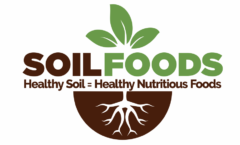
The Vital Role of Soil: Human Health and Environmental Well-being
 Soil is an indispensable natural resource, underpinning both human health and the stability of our environment. Its role extends far beyond a simple growing medium; it’s a complex, dynamic ecosystem crucial for food production, water regulation, climate stability, and biodiversity. Understanding its importance and adopting sustainable management practices is paramount to securing our future.
Soil is an indispensable natural resource, underpinning both human health and the stability of our environment. Its role extends far beyond a simple growing medium; it’s a complex, dynamic ecosystem crucial for food production, water regulation, climate stability, and biodiversity. Understanding its importance and adopting sustainable management practices is paramount to securing our future.
Importance for Human Health
Soil directly influences human health through several critical pathways:
1. Nutrient and Food Production: Soil is the bedrock of our food supply, providing 98.8% of the calories consumed by humans globally. It contains essential nutrients like nitrogen, phosphorus, and potassium, vital for plant growth and the nutritional value of our food. Healthy soils produce higher crop yields and more nutrient-rich food, combating malnutrition and “hidden hunger.”
Good Example: Fertile soils in regions like the Midwest United States and parts of Africa support diverse crop production, bolstering local economies and feeding large populations. Sustainable farming practices that maintain soil fertility and reduce pesticide use contribute to healthier food, improving public health and reducing the risk of chronic diseases linked to poor nutrition.
Bad Example: Soil degradation, prevalent in areas like sub-Saharan Africa due to over-farming and poor soil management, leads to crop failure, hunger, and malnutrition.
2. Medicine Source: Soil is a treasure trove of medicinal compounds. Many life-saving drugs and vaccines originate from soil microorganisms, including antibiotics like penicillin and cancer treatments like bleomycin.
3. Water Purification: Soil acts as a natural filter, removing impurities as water percolates through it. This filtration process removes pollutants, toxins, and heavy metals, resulting in cleaner and safer drinking water.
4. Gut Health: Direct contact with soil can positively influence human gut health, as humans share numerous bacterial groups with the soil microbiome.
5. Disease Prevention: Healthy soils lead to nutrient-rich food and play a role in preventing diseases.
Bad Example: Soil contamination from industrial waste, agricultural runoff, and chemical pollutants can lead to health problems like heavy metal poisoning, antibiotic resistance, or the spread of harmful pathogens through food or water.
Environmental Significance
Soil’s influence extends beyond human health to encompass the broader environment:
1. Carbon Sequestration and Climate Regulation: Soil is a significant carbon sink, storing more organic carbon than the atmosphere and all vegetation combined. This carbon sequestration plays a critical role in mitigating climate change.
Good Example: Forest soils, grasslands, and wetlands excel at storing carbon. Reforestation and sustainable farming practices enhance carbon storage, reducing atmospheric carbon levels.
Bad Example: Deforestation, overgrazing, and unsustainable farming degrade soil, diminishing its capacity to sequester carbon and contributing to increased greenhouse gas emissions.
2. Water Regulation: Healthy soil reduces flood risks by absorbing and storing water, decreasing runoff and erosion. It also helps regulate the water cycle by absorbing excess rainwater, reducing flooding and replenishing groundwater supplies.
Good Example: Healthy wetlands and forest soils in regions like the Amazon or northern Europe help regulate the flow of water, preventing floods and maintaining clean water supplies.
Bad Example: In areas with compacted or contaminated soils, such as urban centers, water runs off quickly, leading to erosion, pollution of water bodies, and increased flooding.
3. Biodiversity Support: Soil provides habitats for 25% of global biodiversity, supporting a vast array of organisms, including fungi, bacteria, invertebrates, and larger creatures.
Good Example: Healthy forest and agricultural soils support a variety of species, from earthworms that aerate the soil to pollinators like bees that thrive in healthy environments.
Bad Example: Monoculture farming practices and overuse of pesticides can disrupt soil ecosystems, leading to the loss of biodiversity and weakening the soil’s ability to provide essential ecosystem services.
4. Nutrient Cycling: Soil is essential for cycling nutrients, which support plant growth and enhance plant resilience to biotic stresses. Soil organisms play a crucial role in nutrient cycling, soil aeration, and the decomposition of organic matter. A diverse soil ecosystem promotes soil fertility, plant health, and biodiversity above the ground.
The Dark Side: Soil Degradation
Alarmingly, current estimates suggest that 30-70% of the world’s soils are degraded or at risk, primarily due to human activities. This degradation manifests in several forms:
1. Soil Erosion and Desertification: Deforestation, overgrazing, and intensive farming lead to soil erosion and desertification, resulting in irreversible soil loss. This has significant implications for human livelihood and the environment.
Good Example: Terracing and crop rotation practices prevent soil erosion, protect against desertification, and maintain long-term agricultural productivity.
Bad Example: In regions like the Sahel in Africa, where over-farming and deforestation have led to desertification, local communities are faced with the loss of arable land, leading to food insecurity and forced migration.
2. Contamination: Contaminated soils can cause toxic chemicals to accumulate in plants, animals, and water sources, leading to decreased crop yields and human illness.
3. Nutrient Depletion: Unsustainable farming practices deplete the soil of essential nutrients, accelerating global malnutrition.
Conclusion
Soil is a precious and non-renewable resource that sustains life on Earth. Its protection and responsible management are crucial for maintaining human health and environmental sustainability. The benefits of healthy soils are immense—from providing food and clean water to mitigating climate change and preserving biodiversity. We must prioritize the adoption of sustainable practices like crop rotation, organic farming, reforestation, and conservation tillage to maintain soil health and safeguard its essential services for current and future generations. The urgency of this task cannot be overstated. Sustainable soil management practices and conservation efforts are crucial to ensuring a healthy planet for future generations.
